#100 Women Artists https://www.continuum.umn.edu/umnlib/2018/06/excuse-me-sir-yes-this-is-a-rant/
What Started Project http://www.jacquelinedavies.net/blog/2018/6/2/excuse-me-sir-did-you-forget-something
Sandra Boynton is the Unsung Hero of Emergent Literacy
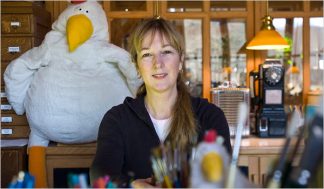
Sandra Boynton in her Connecticut studio, which she shares with some of her quirky characters. Credit Phil Mansfield for The New York Times
Trying Not To Bury the Lede
Sandra Boynton’s books “light up” brains!
Read on.
Academic Research to Support
Hudson Kam, C. L., & Matthewson, L. (2016). Introducing the Infant Bookreading Database (IBDb). (in press) Journal of Child Language.
Abstract:
Studies on the relationship between bookreading and language development typically lack data about which books are actually read to children. This paper reports on an Internet survey designed to address this data gap. The resulting dataset (the Infant Bookreading Database or IBDb) includes responses from 1,107 caregivers of children aged 0–36 months who answered questions about the English-language books they most commonly read to their children.
It is interesting to note that of the 105 titles that were provided by the caregivers in the study, the leading author was Sandra Boynton with fifteen titles. For comparison, Dr. Suess was listed as the author of eleven and all the others including the usual suspects like Mo Willems, Margaret Wise Brown, Eric Carle, and P.D. Eastman with less than four.
Those Titles Included
Moo, baa, la la la!
The going to bed book
Barnyard dance!
Pajama time!
Hippos go berserk!
Snuggle puppy!
Horns to toes and in between
But not the hippopotamus
Blue hat, green hat
Are you a cow?
Night-night, little pookie
Oh my oh my oh dinosaurs!
Doggies
Belly button book!
Tickle time!
ALA /ALSC Children’s Literature Legacy Award.
There are Mock Caldecotts, Mock Newberys, I am thinking of holding a Mock Children’s Literature Legacy Award. If only to have a platform to argue for the award to go to Sandra Boynton.
“The Children’s Literature Legacy Award honors an author or illustrator whose books, published in the United States, have made, over a period of years, a significant and lasting contribution to children’s literature through books that demonstrate integrity and respect for all children’s lives and experiences.”
Boynton is an
Author, illustrator, songwriter, music producer and entrepreneur has written more than 50 children’s books and created more than 4,000 greeting cards. (New York Times. 2013)
Sandra Boynton was early pioneer, transitioning her illustrations and playful text from their origins in greeting cards to board books embraced by generations. Surely you remember “Hippo, Birdie, Two Ewe”? Boynton cards can still be purchased at her website.
I’d been hand selling her books as a bookseller in the 1980s. I was the buyer for the Please Touch Museum Education Store. We were named the best children’s bookstore by Philadelphia Magazine and it was the best board book collection that brought us that attention.
Moo, Ba, La La La! (Simon & Schuster, 1982)
The Going to Bed Book (Simon & Schuster, 1982)
and Blue Hat, Green Hat (Simon & Schuster, 1984)
When
HERE, GEORGE! came out of the review box, I ran around the office reading it aloud. This is perfect! Listen to this! If I say anymore that would ruin it.
By Sandra Boynton. Illustrated by George Booth, 32 pp. Simon & Schuster. 2018.
Sandra Boynton wrote the story to a George Booth’s fairly wretched dog sketch. More about this process at The Paris Review Drawing Dogs in George Booth’s Living Room
“The iconic cartoonist Booth sketched a nervous, lovable-looking dog as a gift to Boynton. She turned it into one of her famously funny, perfectly calibrated board books, spinning a droll story about a pup who won’t get up – or so his owners think.” Catalog text.
Talking About The Art
I am supposed to be writing about the art. Boynton’s menagerie of cows, ducks, pigs, turkeys, hippos,moose, and elephants are cartoonish, deadpan, humorous, cuddly, charming, serious, sad, warm, joyous, bewildered, and thoroughly charming.
Her pacing is exquisite. Her line sure. Her composition clean and balanced. Each page turn is an adventure. A pioneer in the board book format, Boynton never loses sight of her audience of toddlers and their caregivers.
Book after book, her work is a consistent delight as the young listeners request that it be read aloud again and again.
Talking About the Art and The Text
I have been thinking about Sandra Boynton. For years, I have maintained that she was the inheritor of early childhood literature greatness and innovation from Bank Street’s Lucy Sprague Mitchel and the Writers’ Lab. I knew that her board books were works of art with the text and the words seamlessly addressing the developmental concerns, big feelings, and emergent reading needs of babies and toddlers. The rhythm, rhyme, and repetition of her poetry sings. Boynton teaches grown-ups how to read aloud to their little ones.
Sandra Boynton Gets Child Development
Boynton’s Pookie stories put the child in the story with her anthropomorphic Pig. I think School Library Journal’s reviewer said it best “sweet but never saccharine.” School Library Journal (January 1, 2018)
Was There Academic Research to Support My Conjectures?
There is something called the “research rabbit hole.” It is when the researcher begins the investigation and gets sidetracked.
If you are interested in the history of board books for children, may I suggest Allison G. Kaplan’s, EdD, From Board to Cloth and Back Again: A Preliminary Exploration of Board Books.” Children and Libraries (2012): 41-44.
and
Buried in an academic evaluation of Art Spiegelman’s In the Shadow of No Towers as board book: from the matter of materiality to the way that materiality matters, by Michelle Ann Abate is a history of the publishing of board books in the United States.(Jeunesse: Young People, Texts, Cultures, vol. 7, no. 2, 2015, p. 40+. Educators Reference Complete, http://link.galegroup.com.ezp3.lib.umn.edu/apps/doc/A462327862/PROF?u=umn_wilson&sid=PROF&xid=9c661041. Accessed 2 July 2018.)
Skip to the section, “Designed to Be Chewed as Much as Read: The Board Book as Didactic Device, Cultural Commodity, and Teething Ring.”
What I Did Find Out?
From, Edwards, Claire Maples. “Maternal Literacy Practices and Toddlers’ Emergent Literacy Skills.” Journal of Early Childhood Literacy, vol. 14, no. 1, 2014, pp. 53–79.
“Emergent literacy skills have been found to be predictors of later literacy proficiency. For example, alphabet knowledge in kindergarten appears to be one of the strongest unique predictors of reading ability in later grades.” (Catts et al., 2002; Evans et al., 2000; NELP, 2009; Stackhouse, 2000).
This isn’t news to anyone who works with teachers, librarians, parents, or children.
And
“Other significant emergent literacy skills include print conventions, print exposure, syllable segmentation, rhyming and writing one’s own name “(Cunningham and Stanovich, 1991; NELP, 2009).
No surprises here.
“Opportunities to participate in print-related activities, such as shared book reading, practising ABCs, reciting nursery rhymes, recognizing environmental print, and pretending to read a familiar book, make it possible for emergent literacy skills to develop within natural contexts” (Burns and Snow, 1999; Rabidoux and MacDonald, 2000).
And
Parents should not underestimate the importance of reading to their young children. Reading to a child stimulates the mind and imagination, helps develop language and listening skills, promotes rich vocabulary development, expands the child’s understanding of the world, shows the pleasure of reading, and offers a loving and memorable experience. Anderson et al. conclude that the most important activity for developing literacy is reading aloud.(Anderson, R.C., Hiebert, E.H., Scott, J.A., & Wilkerson, I.A. (1985). Becoming a nation of readers: The report of the commission on reading. Washington, D.C.: National Institute of Education.)
What did we learn from this academic research? Reading aloud, sharing books, rhythm and rhyme are all excellent ways to develop emergent literacy.
Also
Shelly Cooper who investigated the relationship between songs, story, and literacy in Lighting Up the Brain With Songs and Stories (General Music Today Vol 23, Issue 2, pp. 24 – 30 January 6, 2010 DOI: 10.1177/1048371309353289 http://gmt.sagepub.com)
“Songs and stories have a strong relationship to each other and have the capacity to boost brain development, increase vocabulary, and promote future academic success. The sounds and foundational structures of reading and singing provide young children with successful pathways for advancing language skills, increasing memory, and promoting emerging literacy.”
“They both provide multiple opportunities for engaging in reciprocal vocalizations while simultaneously immersing children in the structure, rhythms, rhymes, and melodic patterns of language. Brain imaging provides researchers and teachers with evidence the songs and stories can ‘light up the brain’.”
This totally makes sense
Sandra Boynton’s books “light up” brains!
And of course Boynton’s musical books are a delight.
“Boynton is well known in North America for her boisterous lap poems;her sense of rhythm is as faultless as her sense of the ridiculous. All these talents are put to exceptionally good use in Philadelphia Chickens, a picture book with accompanying CD, which describes itself as the ‘deluxe illustrated lyrics book of the original cast recording of the unforgettable (though completely imaginary) stage spectacular, Philadelphia Chickens, a tooillogical zoological musical revue’ (Reading outside the book, Margaret Mackey, Papers: Explorations into Children’s Literature. 14.2 (Nov. 2004): p18+.)
“Lap poems” I really wish I had written that.
Philadelphia Chickens link at youtube with the Bacon Brothers. Full disclosure, I was born and raised in Philly.
Full disclosure: This one is my favorite. Darius Rucker singing Beautiful Baby and Dwight Yoakam singing I’ve Got A Dog.
Sandra Boynton’s
wordplay, the visual puns and jokes, and the explication of concepts with rhythm, rhyme, and repetition are gifts to everyone who reads them aloud.
And there is more!
Sandra Boynton is the creator of digital interactive books. Many an airport meltdown by a 2.5 year old has been adverted due to the fact that I have them on my iPad.
I need something that holds up to repeated readings, will enchant a 2-year-old and their five-year-old sister. On a recent flight to Japan, the four-year-old across the aisle from me exhausted my carry-on picture books in about a half-hour. We spent about 45 minutes, two different times on the Boynton book apps. Blue Hat, Green Hat has been a winner for years.
And no, I don’t count this as “screen time”
I came up for air around 5:00 am this morning.
That was some rabbit hole. There is so much more. I suspect a paper in the future.
TMI
Everyone who knows me, knows that I have dreamed for years of a funny book award. Librarians know. Teachers know. Caregivers know. Funny books are the best. Funny books, silly books, raucous books, quietly humorous books should have their own award.

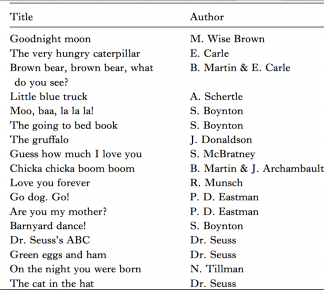


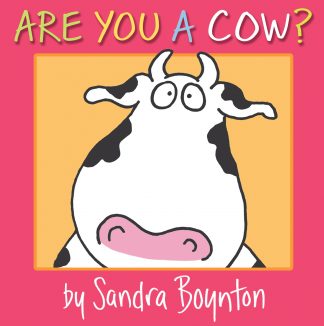
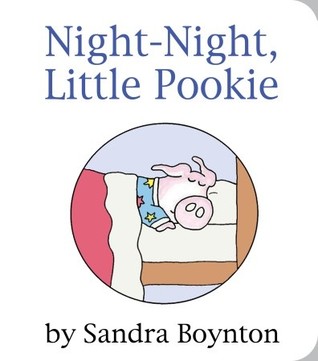

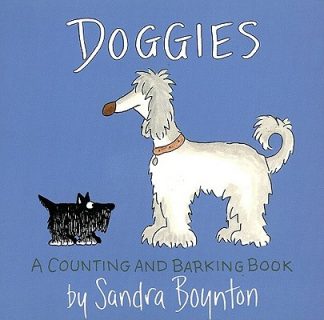
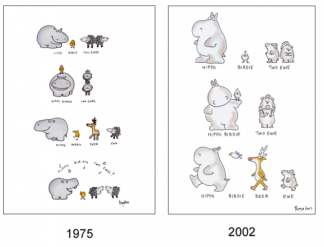
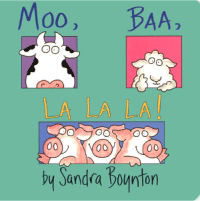
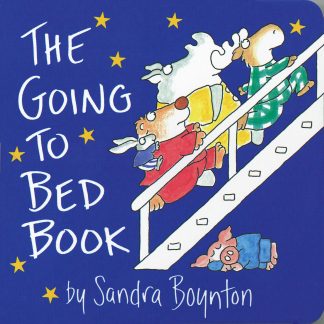
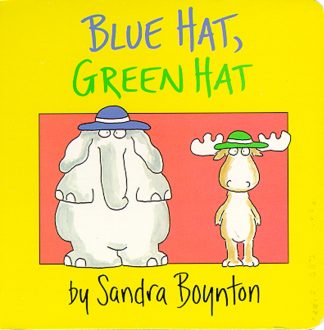
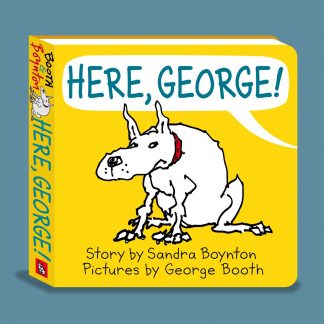
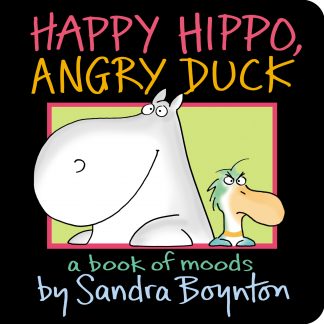
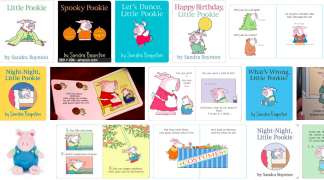
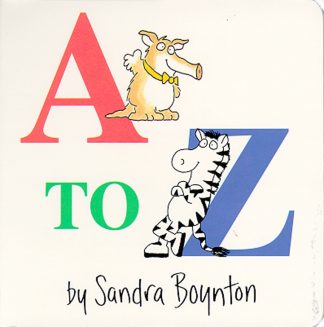
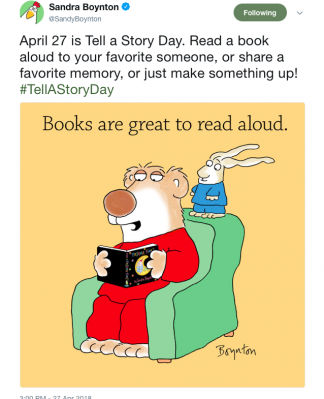
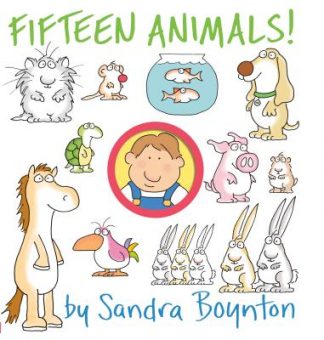
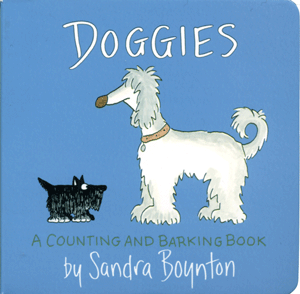
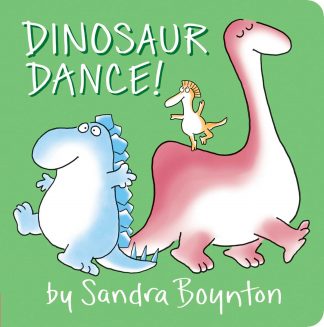
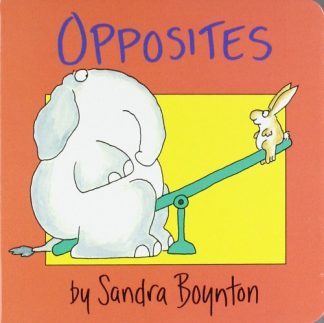
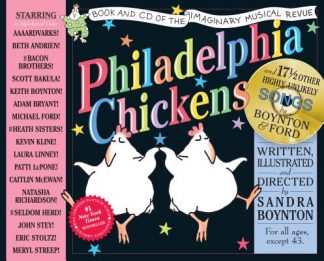
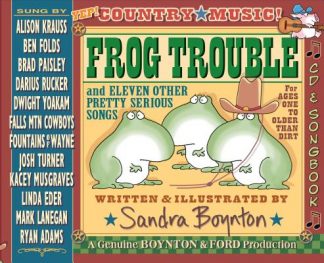
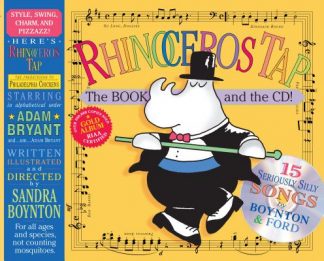
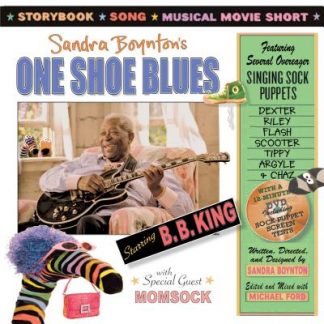
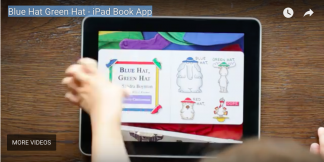
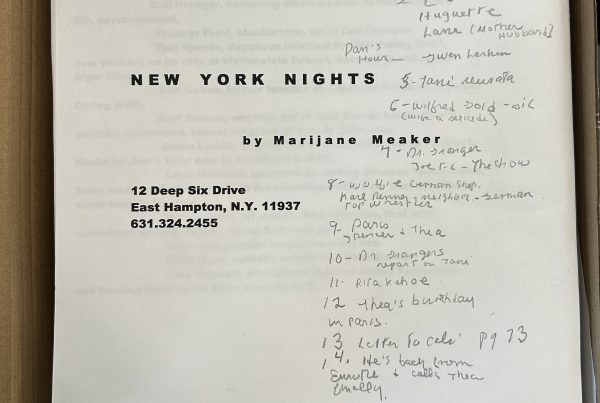
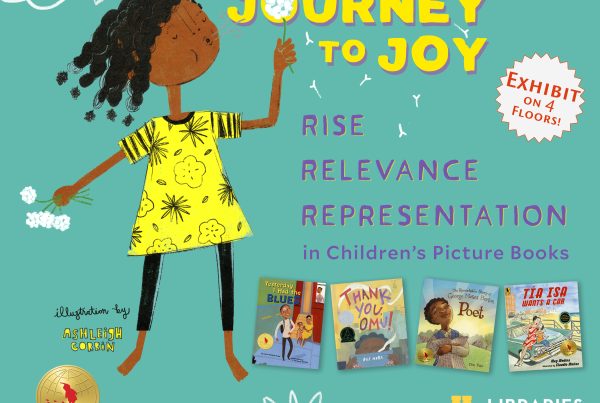
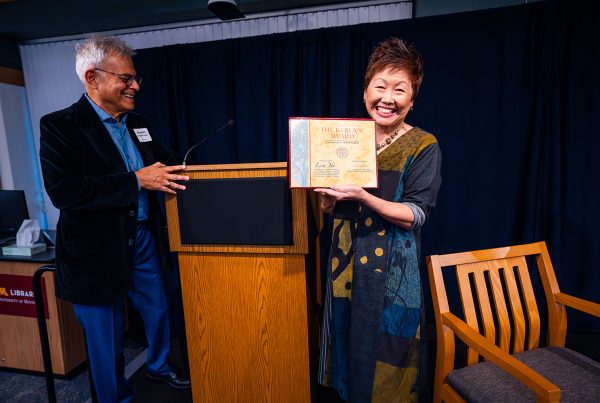

Of course there should be a funny book award, but it would be harder to get the judges to agree on a winner than for any other category. Sense of humor is so individual.